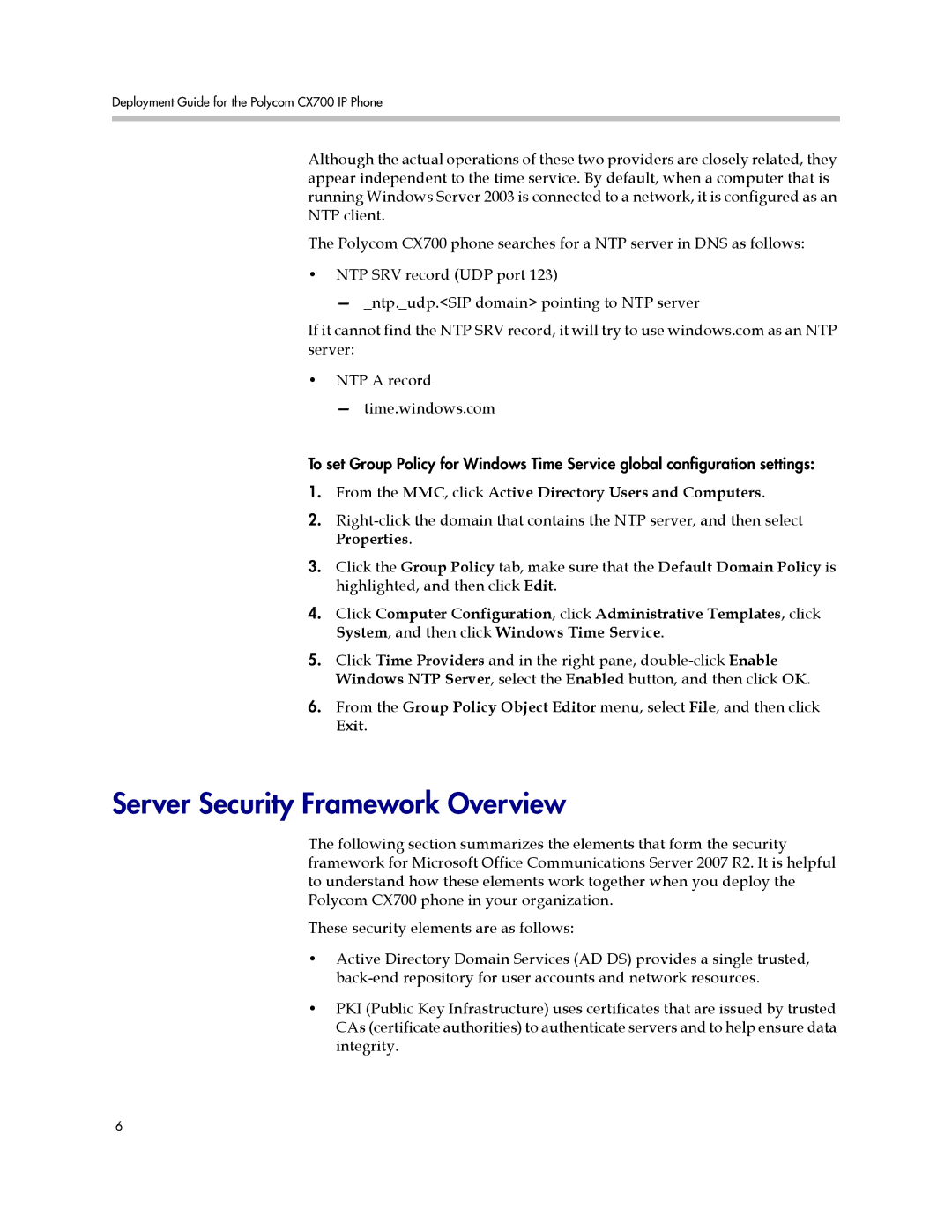Deployment Guide for the Polycom CX700 IP Phone
Although the actual operations of these two providers are closely related, they appear independent to the time service. By default, when a computer that is running Windows Server 2003 is connected to a network, it is configured as an NTP client.
The Polycom CX700 phone searches for a NTP server in DNS as follows:
•NTP SRV record (UDP port 123)
—_ntp._udp.<SIP domain> pointing to NTP server
If it cannot find the NTP SRV record, it will try to use windows.com as an NTP server:
•NTP A record
— time.windows.com
To set Group Policy for Windows Time Service global configuration settings:
1.From the MMC, click Active Directory Users and Computers.
2.
3.Click the Group Policy tab, make sure that the Default Domain Policy is highlighted, and then click Edit.
4.Click Computer Configuration, click Administrative Templates, click System, and then click Windows Time Service.
5.Click Time Providers and in the right pane,
6.From the Group Policy Object Editor menu, select File, and then click Exit.
Server Security Framework Overview
The following section summarizes the elements that form the security framework for Microsoft Office Communications Server 2007 R2. It is helpful to understand how these elements work together when you deploy the Polycom CX700 phone in your organization.
These security elements are as follows:
•Active Directory Domain Services (AD DS) provides a single trusted,
•PKI (Public Key Infrastructure) uses certificates that are issued by trusted CAs (certificate authorities) to authenticate servers and to help ensure data integrity.
6
